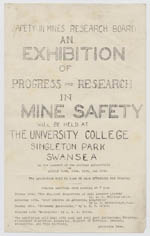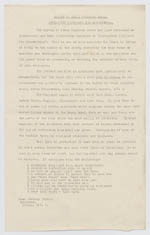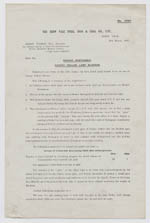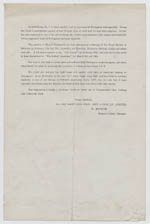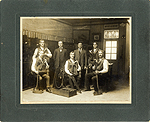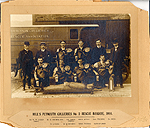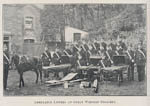 |
| You are here: Cwm > Themes > Medicine And Health > Occupational Health > : Mine Safety and Welfare | |
 | |
|
Mine Safety and Welfare |
|
|
|
|
|
|
|
Mining Safety
The Miners’ Accidents (Rescue and Aid) Act of 1910, and a subsequent 1911 Report of the Departmental Committee on the Organisation of Rescue and Aid in the Case of Accidents in Mines, recommended the number of rescue brigades to be kept in each mine according to the number of miners employed, size of brigades, knowledge and training, and equipment. Specialist safety equipment was used by pit rescue teams, such as breathing apparatus, stretchers, helmets, and ambulances. Competitions between rescue teams were often held at local galas and fetes. First aid was taught to miners at classes organised by collieries, the British Red Cross Society and the St. John’s Ambulance Association. Individual miners were nominated to carry the first aid box whilst working underground, and they sometimes received additional payment for doing so. A colliery ‘ambulance’ room was usually situated near the pit-head, or pit-head baths, and accidents were reported there. Also treatment for minor injuries was received from a first-aider, nurse or doctor. In 1926, a Departmental Committee appointed by the Secretary for Mines reported on its investigation into provisions and maintenance of rescue appliances, and the formation and training of rescue corps and brigades. The Committee recommended that mine owners adopted one of two schemes; either a specified proportion of trained men, or a rescue corps of permanent, highly trained staff in constant attendance at Central Rescue Stations. Rescue Stations were to operate within a 15 mile radius of the mines they attended. Rescue workers were to have a minimum of two years’ underground experience, and had to undergo fitness and medical examinations prior to beginning their training.
Welfare
The general welfare of miners was financed by a Welfare Fund supported by a levy of 1d. per ton on all coal raised in Great Britain, and administered by the Central Miners’ Welfare Committee and District Committees. The Fund provided recreation facilities, and health-related benefits such as access to convalescent facilities, hospitals, ambulance and nursing schemes, pit-head baths and canteens. The Coal Mines Act of 1911 stated that pit-head baths were to be provided where employees wanted them. Pit-head baths played an important role in the lives of miners and their families, as most did not have bathrooms at home, so bathing took place in a tin bath in front of the living-room fire. The women had to prepare the baths and there was a constant danger of children falling into the hot water and being badly scalded or even killed. Pit-head baths supplied bathing facilities for the miners and also drying rooms for their work clothes. Miners received allowances for soap and towels to use in the baths, and during the Second World War were entitled to additional soap rations. Where bathing facilities existed at collieries, ‘Baths Committees’ consisting of representatives of the owner and the workers were set up to manage them. In 1924, the provision of pit-head baths became compulsory, but some collieries were slow to build them, and miners’ wives in south Wales ran a campaign in support of the baths. |
|
|
|
|
Swansea University Special Collections
| ©University of Wales Swansea 2005 |



